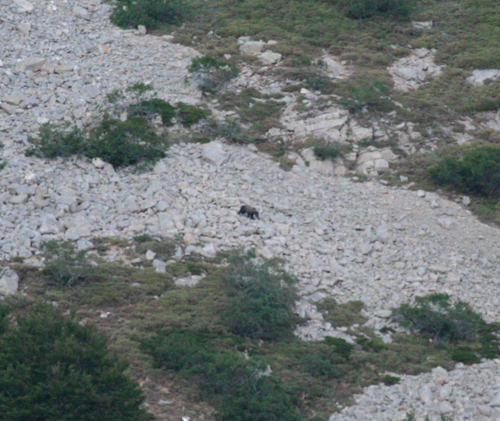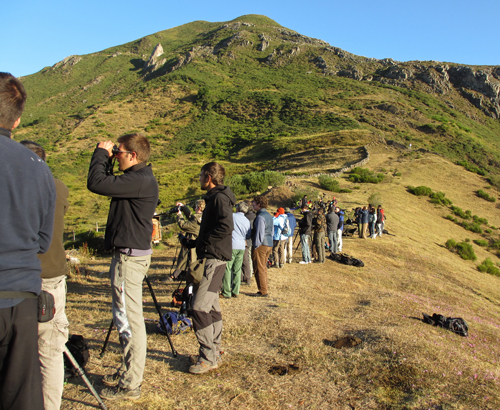Before arriving in Asturias on August 27, 2013, I sent John Muddeman a list of about 15 birds that (a) were included on the list of Birds of Somiedo furnished to us for the trip, and (b) that I had never seen before, and would therefore be life birds. My list was so short because I had seen many of the Spanish (and European) birds during my two prior trips with John. One of my targets, the Capercaillie, is probably extinct in the Somiedo area, so it was included only because it was listed for the area. Others are summer residents, and may have migrated south before my arrival. These included Scops Owl, Nightjar, Water Pipit and Spotted Flycatcher. Fortunately, we found a good number of Water Pipits and at least one Spotted Flycatcher. John saw a couple of Nightjars from his van early one morning, but I was in the other van and missed them.
Several others that I listed are rare and difficult to find in Somiedo. These included Middle Spotted Woodpeckers, Treecreepers and Ring Ouzels, and we in fact did not find any of these. Several others are generally only found at higher elevations than we achieved, and so we missed those too: Snowfinches, Alpine Accentors and Alpine Choughs. Redwings are winter residents and had not yet arrived. Of the remaining three species on my list Woodcocks are quite scarce and difficult to find under any circumstances, (and we did not); Tawny Owls were briefly spotted and heard very well just outside my hotel window; and Marsh Tits showed up a few feet from me as I rested beside the trail on our last day in the mountains. That was a nice treat.
Unfortunately, none of these four new bird species offered good photographic opportunities, (Barbara was not with me when the Marsh Tits appeared), so we have no pictures. Several other species, however did give Barbara a good target and here they are:
Red-backed Shrike;
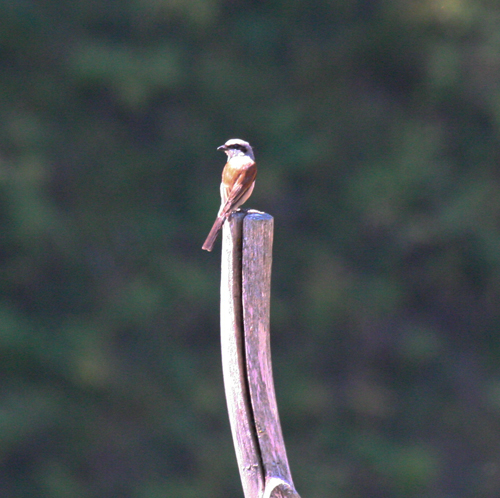
Robin (the famous “Robin Red-breast” of English nursery rhyme fame);

Griffin Vultures soaring overhead.
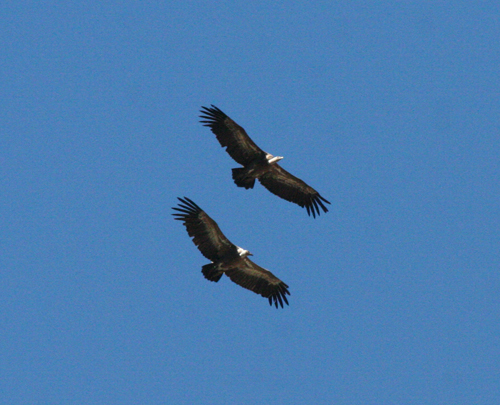
On the other hand, I was introduced to the world of butterfly identification, and they were much more cooperative for photographic purposes.
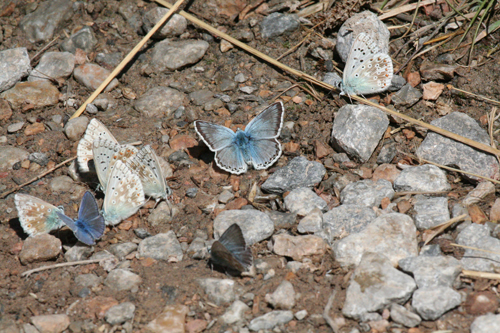
There were many dragonflies and lizards. We saw goats being herded along a bog that we visited.
One of the special attractions of the trip was a visit to the remote, and now abandoned, Brana de Munial, which Barbara hiked to while I lingered back on the trail. These are among the remaining traditional barns and dwellings in the Somiedo area with a circular or oval floor plan and thatched broom roofs.
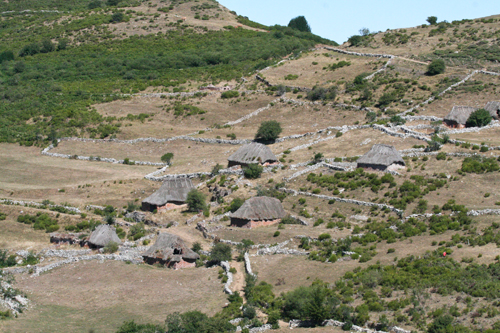
Our picturesque village of Somiedo

One of many scenic views
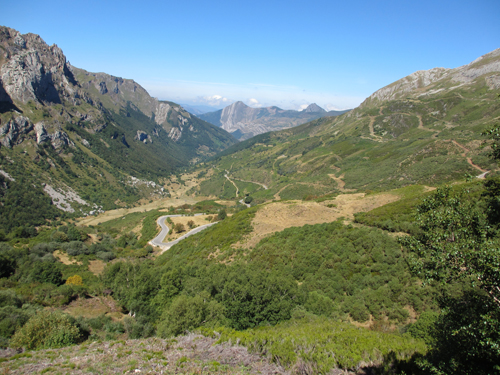
A Hummingbird Moth
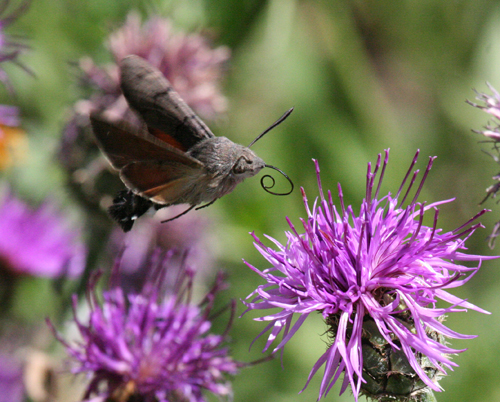
Great Astrakhan horses, with bobbing heads (shaking off flies) and ringing bells

We were very fortunate to enjoy beautiful weather each day of our trip. Once again we found Spain to have such a variety of landscapes. Each time we visit a part of the country we come home with the hope that we will return to yet another part of this fascinating country.



